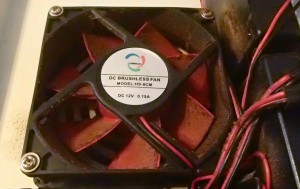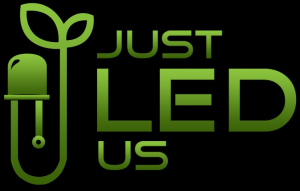Smoke Damage and Technology
Smoke damage and soot is made up of mainly carbon, resin and tar and such a build up cause’s damage to an LED grow light as it has circuit boards and electrical components, just like a computer. Basically anywhere the air flows is where the damage is going to occur. Your LED grow light will have to work harder and may eventually stop functioning in a normal manner because of the additional strain it is placing on itself due to the residue and build up. Likewise with a computer, dust works its way into the fan and sticks to the grease and accumulates there, eventually interfering with the action of the fan.
Some companies do not cover smoking around your computer in their warranty.

6 Months Smoke Damage
When it comes to smoke damage and technology certain grades of restoration are sometimes a necessity and such an effort can always be considered when looking at replacing something and purchasing new, just like a computer. The components, that the residue and soot stick to, provide a pivotal role when it comes to the expected lifetime of your unit. Deposits of this sort will cause your fans to work harder and thus it will contribute to heat within the unit as they aren’t functioning optimally. If this happens to your unit the performance of the heat dissipation unit and fan will be reduced and the removal of heat from the LED junction temperature will be less efficient as compared to when the LED unit is in a condition when it is free of debris.
If heat is not removed, the LEDs run at higher temperatures which not only lowers their efficiency, but also makes the LED less reliable as there will be spectral decay. Thus, thermal management of high power LEDs is a crucial area of maintenance, research and development. It is highly necessary to keep the junction temperature as low as possible.
Imagine, attempting to clean the electronic components in your LED grow light. You would have to start by using a vacuum and soft brush attachment and thoroughly vacuum the unit inside/out. Following this you would then need to use alcohol dipped cotton balls and cotton swabs to surgically clean the internal components, contacts, switches, fans, heat dissipation units and wires. As you can imagine, renovating an entire LED grow light is labour intensive because many parts will have to be removed in order to clean them.
Most experienced electronic repair people are reluctant to attempt this procedure in computer or electronics as they are usually only willing to guarantee the item until you walk out the door with it. After that, you’re on your own, unless you’re willing to pay for the work in maintenance fees.
In a home or business environment in which electronics have come to play overwhelming and vital role, smoke residue damage demonstrates a crippling impact of electronic damage and the importance of including effective electronic restoration for a continuity plan.
Qualified electronic restoration personal need to understand what can be restored, the criteria for electronic restoration, the types of contamination that can be removed, the procedures for fully effective electronic restoration, the cleaning process, the post restoration performance expectations and what types of damage can be restored.
The good news is that there are many techniques that that can be applied in electronic restoration and most forms are regarded as a highly sophisticated discipline. Research, development and testing have given us increasingly refined, field-proven techniques for restoring a wide range of damaged electronic equipment and all of these aspects come at a cost for both companies and consumers alike.
Therefore we suggest that if you are going to smoke in your home in the vicinity of your LED grow light you should consider purchasing the JUST LED US Extended Warranty as it covers basic cleaning a restoration. In many cases, the skillful removal of carbon, resin and tar effects can return electronic machines or components to an almost “brand new” state for 10 to 30% of the cost of replacement and, in most cases, in a fraction of the replacement time. This is widely accepted as more economical than complete replacement of the equipment in many fields of electronics.



